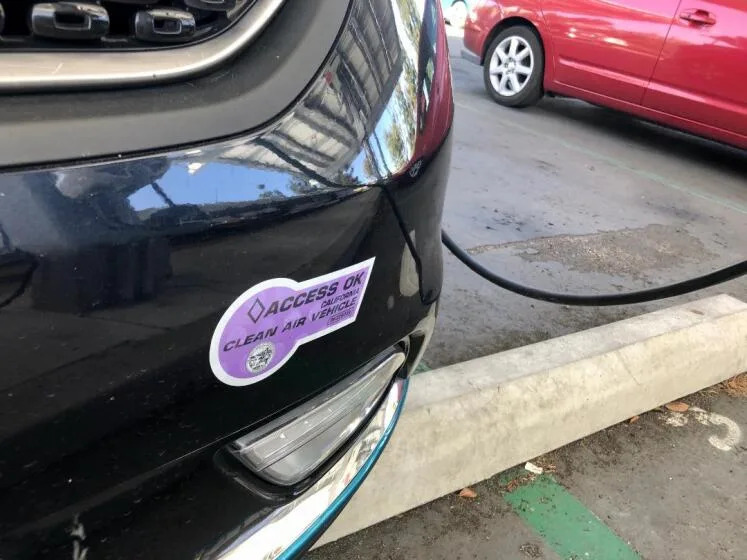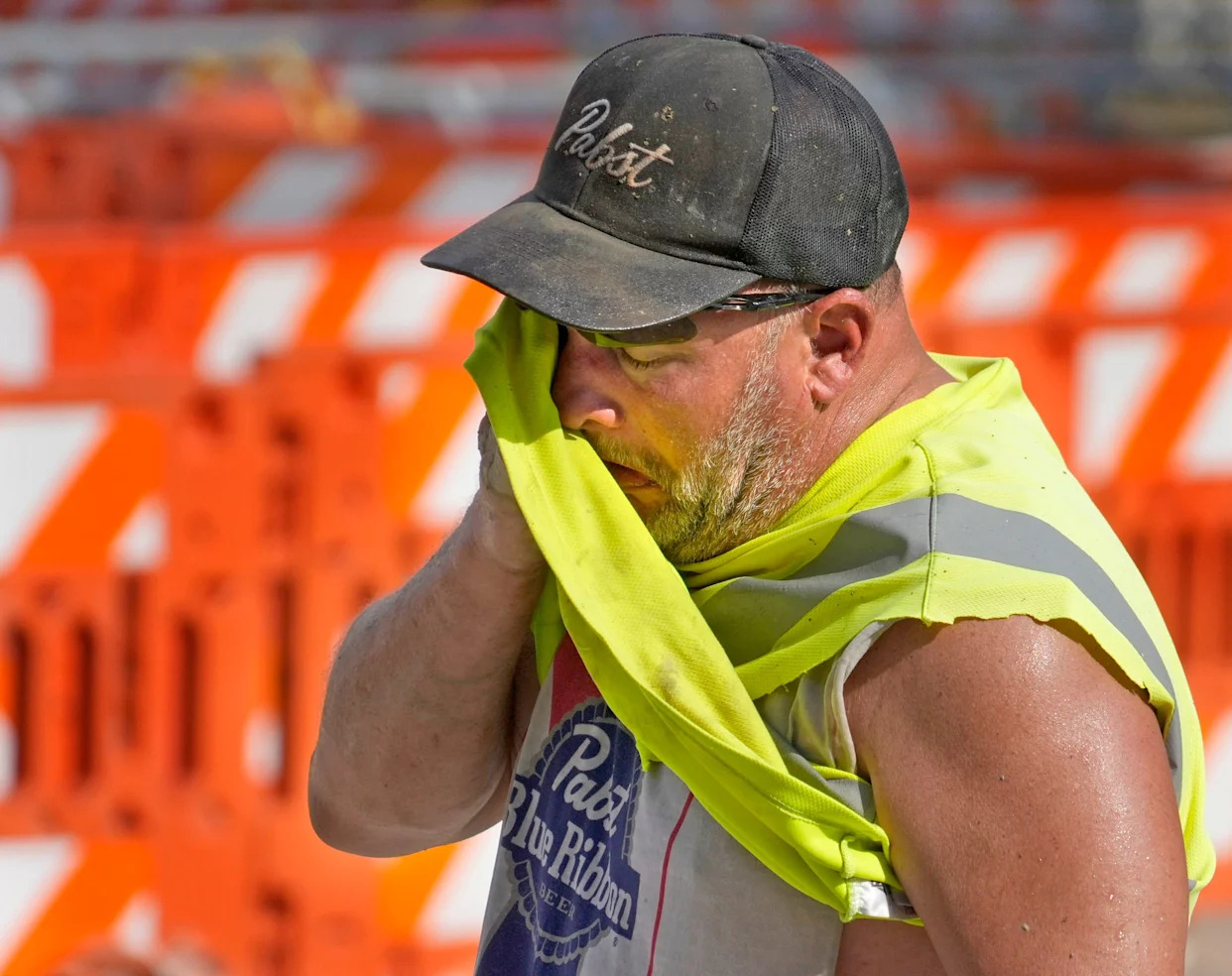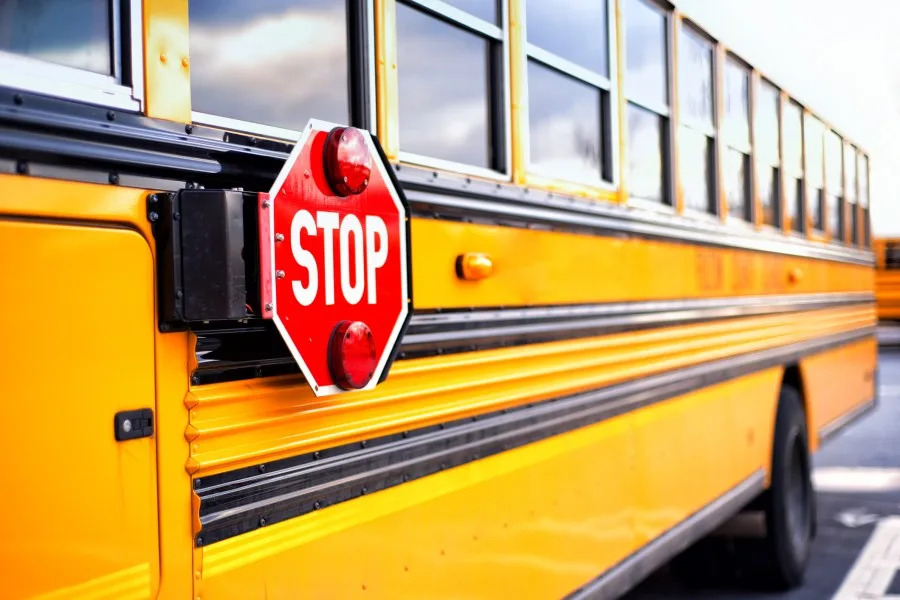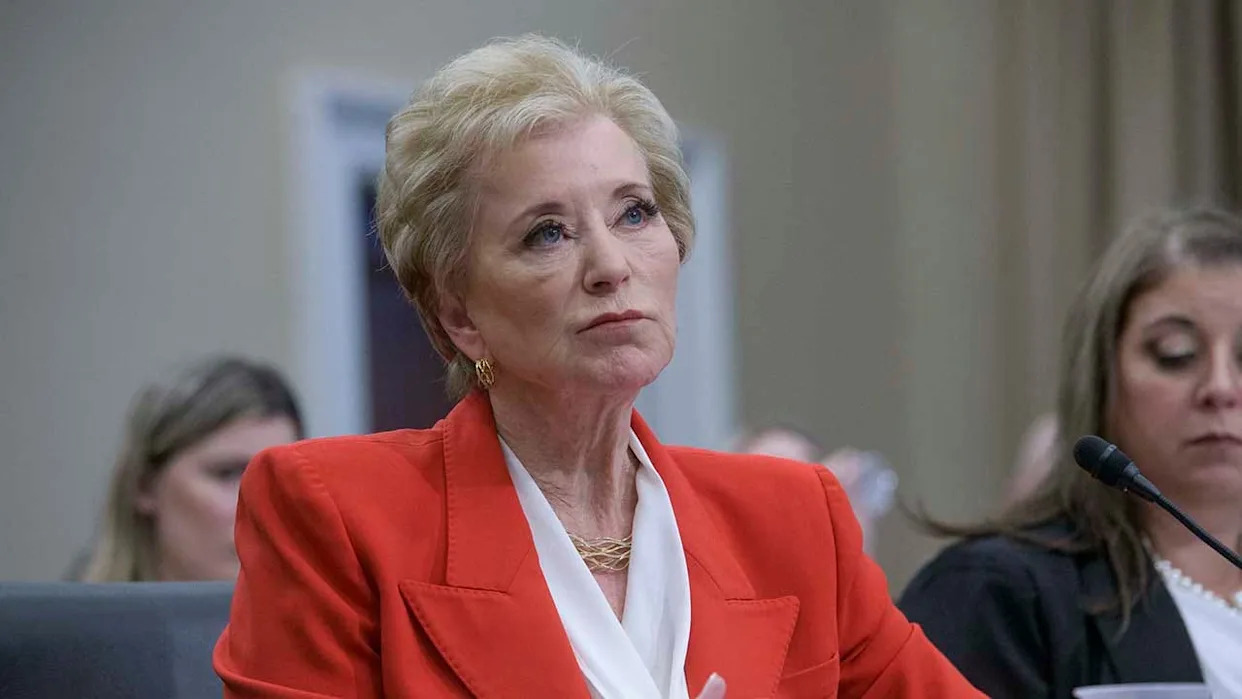
For the last two decades, more than a million motorists who have slapped "clean air vehicle" decals on their electric and hybrid cars have been free to cruise in carpool lanes with no passengers.
But that perk could be coming to an end on Sept. 30 if Congress fails to extend California's Clean Air Vehicle Decal program.
"Clean Air Vehicle Decals are a smart, cost-effective incentive that has played an important role driving the adoption of clean and zero-emission vehicles in California," read a statement from Liane Randolph, chair of the California Air Resources Board. "But thanks to the federal government’s failure to act, this successful program is coming to an end."
You can still apply for a decal by Aug. 29, but it will become invalid on Oct. 2, according to the Department of Motor Vehicles.
Extending the decal program in California — or any other state — would require the approval of Congress and the signature of President Trump, said Bill Magavern, policy director for the Coalition for Clean Air.
"I certainly would not bet on that," Magavern said.
"It seems that the only deadline that this Congress responds to are the deadlines that are set by Trump, and I really don't see him going out of his way to extend this program."
Why this state program needs congressional approval
Federal legislation has allowed the U.S. Environmental Protection Agency to grant solo drivers in low-emission and energy-efficient cars to use the carpool, or High Occupancy Vehicle (HOV), lane.
The goal was to promote the adoption of alternative-fuel vehicles and assist in meeting environmental goals that included reducing fuel consumption and pollution caused by congested freeways, according to the U.S. Department of Energy.
Over time, states developed incentive programs, choosing which car models to give carpool access to.
"Clearly in the early days of zero-emission cars, the carpool lane stickers were an important incentive for some drivers, particularly in places like the Bay Area and Los Angeles where there is major congestion," Magavern said.
California is one of 13 states that offer this type of incentive program to its residents. Qualified drivers in the Golden State include those who drive fuel cell electric, natural gas or plug-in electric cars.
Whether the program is still a major incentive, "with electric vehicles topping 20% of new sales, I think is open to question," Magavern said.
However, the electric car advocacy group Plug In America said the program has always been a factor in the minds of consumers.
"Just like a lot of other incentives, the HOV lane access through the Clean Air Vehicle Program is one of those things that drivers look to to assess the overall package of what it's like to either go electric or to get that next electric vehicle," said Alexia Martineau, senior policy manager for Plug in America.
Not renewing the program means that those drivers just have one less reason in the positive column for going electric, Martineau said.
In 2023, California had nearly 1.3 million light-duty electric vehicle registrations and was the only state to report such a high number. Behind California was Florida, with roughly 255,000 registrations, and Texas, with roughly 230,000, according to the U.S. Department of Energy. (Neither Florida nor Texas offers an incentive program.)
In 2015, Congress authorized California's program through a highway funding bill, but that authorization is expiring as of Sept. 30.
What's being done to extend the life of clean air vehicle decals
In an effort to extend the decal program, state Assemblymember Greg Wallis (R-Bermuda Dunes) authored Assembly Bill 2678, which would push the end date to Jan. 1, 2027.
The bill was signed into law by Gov. Gavin Newsom last year but is lacking federal approval. Without federal approval, the bill becomes moot.
"Putting the brakes on this program means that starting October 1, 2025, CAV decals will no longer be valid in California, or elsewhere in the United States," the Department of Motor Vehicles said in a statement. "All vehicles will be required to meet posted vehicle occupancy to travel in carpool lanes and pay required tolls or risk receiving a citation."
According to the California Air Resources Board, there are currently 519,000 active decals in the state, the San Francisco Chronicle reported.
What could this mean for the state's environmental goals?
Without the program, drivers will lose access to the carpool lane, but Magavern said it should also mean less congestion in the HOV lanes.
"Now that California has hundreds of thousands of zero-emission vehicles, they can take up a lot of space in the HOV lanes, and those were meant to incentivize people to carpool," he said.
In addition to drivers losing access to carpool lanes, the change could slow the progress the state has made in getting more people into alternative fuel vehicles and reducing pollution.
California's goal for 2035 is that all new passenger vehicles sold in the state be zero-emission.
Car technology today, such as battery-electric, plug-in hybrid-electric and fuel cell electric vehicles, is helping the state reach its goal, according to the California Air Resources Board.
In fact, sales on electric vehicles have been on the rise in the state since 2011, with the exception of stagnant sales between 2018 and 2020, according to a report published by UC Davis.
Today, one in four new cars sold in the state is an EV, Dahlia Garas, of the university's Electric Vehicle Research Center, said in the report.
The university's Electric Vehicle Research Center conducted a survey of drivers from the start of the year until June and found that almost 30% of people said that without any state incentives, including the decal, they wouldn't have chosen to purchase an electric vehicle, said Scott Hardman, assistant director of the center.
"We're still at a very fragile point in the transition to all vehicles being electric," Hardman said. "Only eight percent of the vehicles on the road are electric, and that's not enough for you to reach the point where the vehicles are a social norm."
The Clean Air Vehicle Decal program is just one way the state is working toward its environmental goals — milestones that have recently come under attack, including California's decades-old authority to enforce its own environmental standards.
Recently, U.S. House representatives voted to prohibit California from banning the sale of new gasoline-only cars by 2035 and end California’s ability to set emissions standards for heavy-duty trucks and to combat smog levels in the state.
In Magavern's view, those actions are part of the Trump administration's "war" on California's air, water and climate.
But even though the carpool decal program was once helpful in getting Californians to purchase electric vehicles, Magavern argues that times have changed.
"I think that you can make a good argument that they've outlived their time and that it's more important to have the carpool lanes be filled by vehicles that actually have carpools in them," he said.
This story originally appeared in Los Angeles Times.






Comments